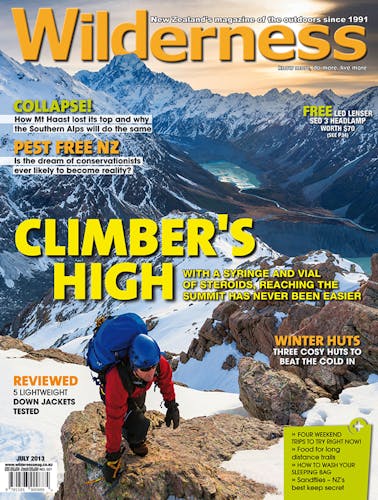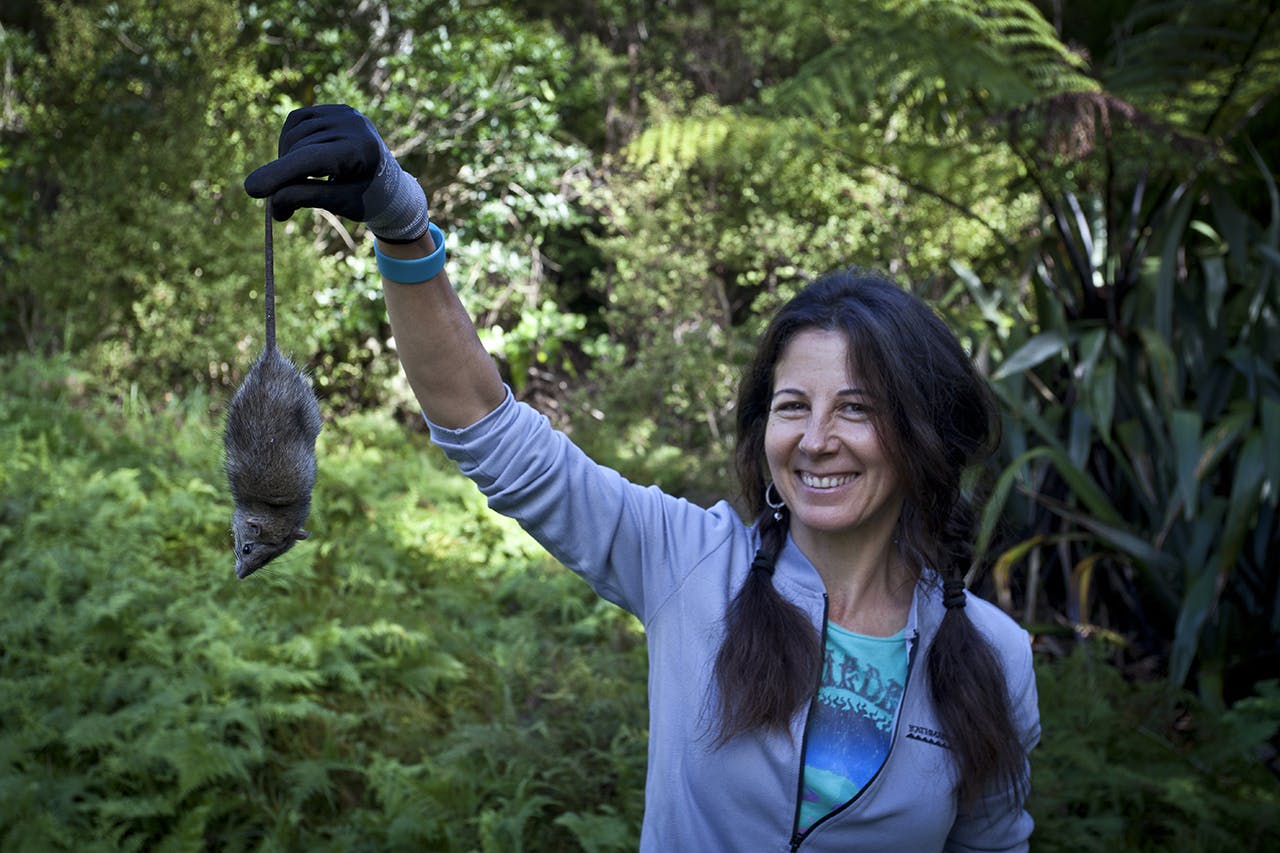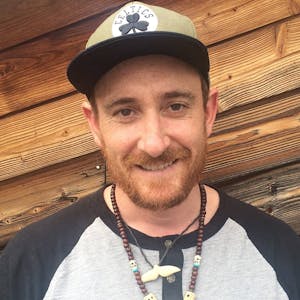Every year introduced predators kill an estimated 26 million native birds, yet ending their reign of terror might be easier than you think
For the 850 residents of Great Barrier/Aotea Island there are two main topics of conversation: crap and rats.
“We’re off the grid out here so we manage everything ourselves,” says local Judy Gilbert. “Waste is a big issue for people and so is the impact of rats on our houses which is something incredible.
“They eat their way through the walls, live out of your pantry and ravage your gardens.
“They are here in extraordinary numbers and are highly tenacious.”
In the last 14 years in one corner of the 285km² island, a conservation project Gilbert manages, the Windy Hill Rosalie Bay Conservation Trust, has trapped 40,000 rats and poisoned unknown scores more.
But this has hardly made a dent in the island’s total population. “The rat is king on the Barrier,” she says.
In the early 1970s when Gilbert was a 19-year-old student hippy she and a group of flower power friends decided to return to nature. Together they purchased a 230ha block of land on the island in the south-east corner called Windy Hill.
They were attracted to the island’s alternative communities and dreamed of starting their own collectively owned one. But Gilbert never expected they’d be living alongside a thriving rodent community.
“From the moment we set foot on the island we were affected by rats,” she says. “In the place we rented while we built our house we had rats running around our bed at night.
“It was just hideous.”
Disgusted, Gilbert placed five traps under her house and caught 60 rats over two autumns. “I thought if this is how many are around my house then how many more must be out in the bush,” she says.
In 1998, her five traps jumped to 100 after she received the go ahead from the Little Windy Hill Company to start a predator control project on its land.
With no clue about what she was doing and with only one worker to help, Gilbert laid the traps in a grid. One of her neighbours was inspired by what he saw and joined the project.
“Then it morphed on me,” Gilbert says.
In 2000, the Ministry of the Environment released its New Zealand Biodiversity Strategy and a year later opened its contestable biodiversity funds specifically to encourage the management of indigenous biodiversity on private land.
This funding, plus more from Work and Income, ASB Trust, Auckland Council and lotteries has meant Gilbert’s trust could pay workers, a boon on an island where volunteers are thin on the ground and unemployment is historically high.
What started as one woman doing her bit for biodiversity is now a community-wide project with eight employees.
Two landowners became 14. The area expanded to 620ha. It includes 80km of tracks and 5000 trap and bait stations.
In 2004, after an absence of 140 years, the trust released North Island robins into its land. The number of kereru and kaka has increased.
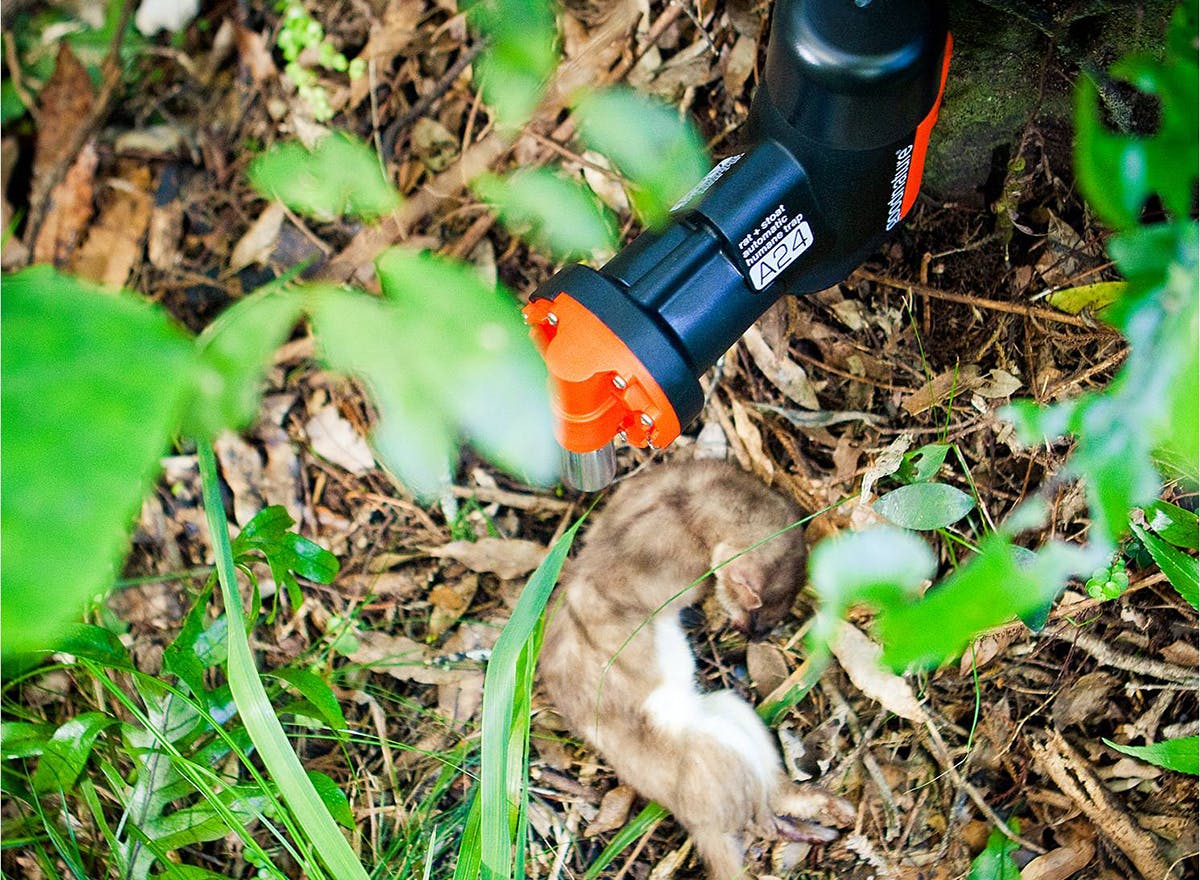
Auto resetting traps are the latest tool to combat predators – more such innovations are needed to make total predator eradication possible. Photo: Supplied
The project’s success surpassed Gilbert’s wildest expectations.
But, while pockets of the island are now bird havens, the bad news is avian life on the rest of it is facing annihilation.
Great Barrier Island Trust chairperson and conservationist John Ogden recently estimated cats and rats slaughter 86,500 native birds on the island every year.
“The forests of Great Barrier Island may still look beautiful to visitors,” Ogden wrote recently, before quoting Victoria University professor of ecology Charles Daugherty. “But, ‘basically our forests are dead. Yes, there are still trees in them, but they’re quiet’.”
According to highly respected ecologist John Innes, introduced predators kill, by conservative estimates, 26 million native birds every year. At least 2788 native species, of all kinds, in New Zealand are threatened with extinction.
Auckland University quantitative ecologist and 2012 winner of the Prime Minister’s MacDiarmid Emerging Scientist Prize, 33-year-old James Russell is carrying out research on unique DNA fingerprinting of rats, sophisticated statistical modelling and application of scientific tools to solve conservation problems.
He says Gilbert’s Windy Hill project is an example of what can be achieved when a whole community gets involved with conservation work.
For the last 10 years, Russell has focused on predator eradication programmes on islands in Auckland’s Hauraki Gulf.
Like Gilbert, he believes Great Barrier Island is the ideal candidate for the biggest, boldest predator eradication programme yet.
If achieved, Great Barrier would become the largest predator-free island in the world and the only one with human inhabitants.
Russell sees a total eradication programme on the island as a pilot experiment that would provide rich learning to help work towards an even bigger goal: a predator free New Zealand.
“The North and the South islands are just the biggest islands in New Zealand,” he says. “We always colloquially refer to them as the mainland, but they’re just really big islands.
“I have a graph of predator control operations over the last 40 years and every 10 years we increase the land area we eradicate predators from by an order of magnitude.
“We’ve gone from 1ha to 10ha to 100ha, to 1000ha, to 10,000ha so now, presumably, 100,000ha is just around the corner.
“In the next 10 years maybe we could look at making Stewart Island and Great Barrier Island predator free.
“If we can do this on small islands, why not aim for our largest islands?”
Russell did a rough calculation and worked out it would cost $24.6b, 12 per cent of GDP, to make New Zealand predator free.
He says if this investment was staggered over 10 years it might be a plausible venture.
For many, the idea of making New Zealand predator-free will seem outrageously farfetched. But for a growing number of scientists and conservationists, it’s the very craziness of the idea that makes it so appealing.
It has been around for a while now, but came to more attention when the late Sir Paul Callaghan laid out his vision of a predator-free New Zealand at his last public lecture days before dying of cancer in March 2012.
During the lecture, Callaghan first proposed creating a dozen 100,000ha restoration zones, about 15 per cent of the current conservation estate.
Each zone would have a fenced predator-free core of 1000ha, surrounded by a 10,000ha ring of land undergoing intensive trapping, also surrounded by a larger ring managed by 1080 drops.
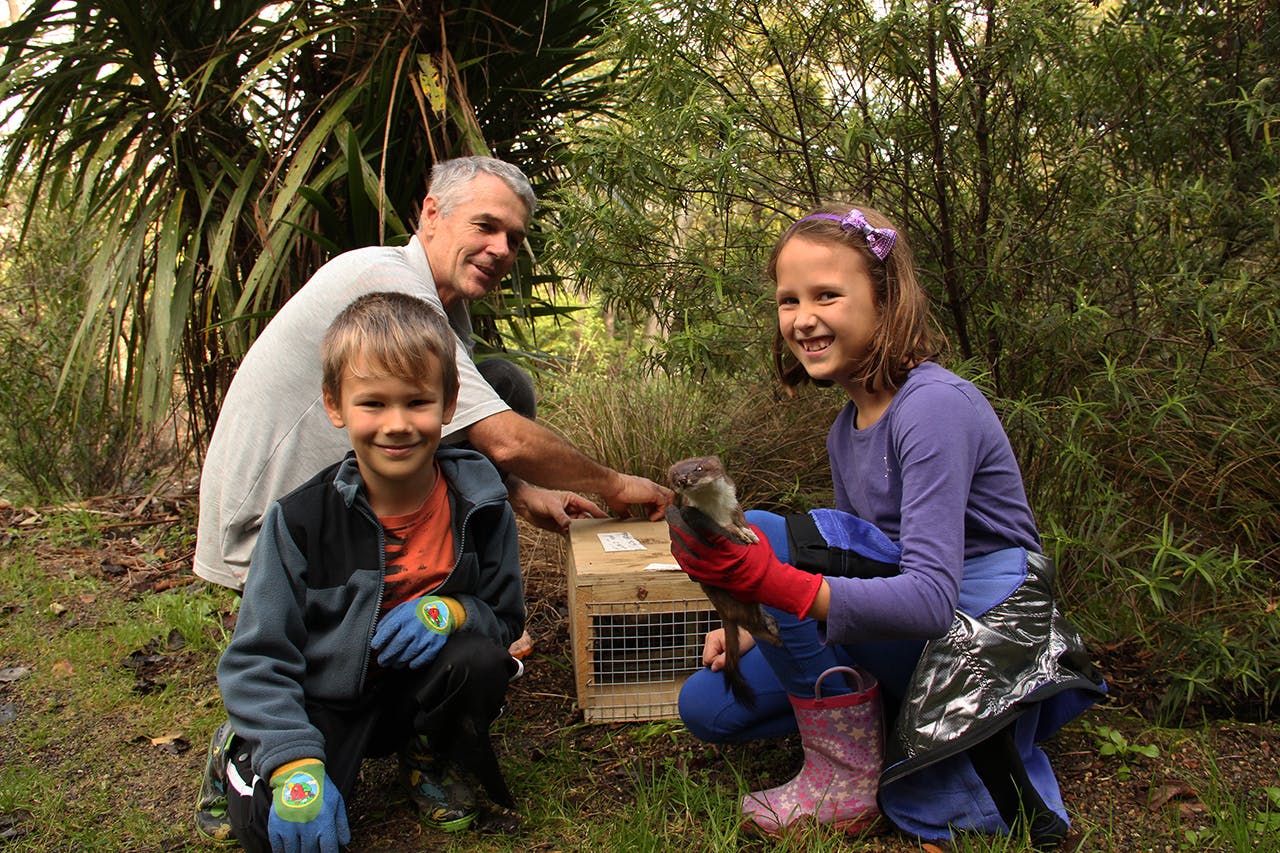
Predator control needs to become part of everyday life for all Kiwis. Photo: Supplied
These expanding biodiversity halos, Callaghan said, would cost $20m a year, about 20 per cent of DOC’s biodiversity budget.
But then he went one step further and got a little crazy.
“Let’s get rid of the lot,” he said. “Let’s get rid of all the damn mustelids, all the rats, all the possums, from the mainland islands of New Zealand.
“We start with Rakiura [Stewart Island]. And we work our way up. We can do this. We know how to do it.
“It’s crazy and ambitious, but it might be worth a shot.”
Callaghan called it the Zealandia programme which, he said, would be New Zealand’s equivalent of America’s Apollo space programme.
As James Russell says, a predator-free New Zealand is bigger than a science challenge and bigger than conservation as usual. He says it gets to the core of our national identity – a conservation nation.
“It’s about forging a national identity which is uniquely New Zealand and feeds back to us, enriching all aspects of our lives,” he says. “We would be creating a new core value for our country, which would need to be held as strongly as, say, those in the United States hold the constitution – and its purpose would need to be defended.”
In June 2012, the topic was raised again at the Transit of Venus Forum held in Tolaga Bay, Gisborne.
Hundreds of scientists, iwi representatives, dignitaries and delegates gathered to further Callaghan’s vision of making New Zealand “a place where talent wants to live”.
Predator-free New Zealand champion and conservationist Nicola Toki was one of the speakers at the forum and argued eradicating predators from the mainland is possible.
“We get told it’s too hard, that it’s crazy, but that’s rubbish,” she said. “In the 1970s nobody believed we could get rats off 16ha, but in 2005 we got them off 11,300ha on Campbell Island.
“We have the technology, we have the science, we certainly have the urgency, and the world is watching.”
A few months later in December, DOC held a two day summit to look for new ways New Zealand could eradicate stoats, possums and rats.
The then minister of conservation, Kate Wilkinson, invited 50 scientists and technical experts to the summit and told them to think as big and as crazy as they liked.
Wilkinson cited a study done by agribusiness advisors Nimmo-Bell to illustrate how important the issue is. The study estimated that New Zealand spends around $840m every year on pest control. These pests cost the country’s productive sector $2.5b annually.
“Eliminating stoats, possums and rats would radically alter the natural and economic health of the country,” Wilkinson said.
The drums of war against introduced predators beat again in May this year when the Government announced its 10 National Science Challenges, one of which was protecting and managing the country’s biodiversity.
The public voted on which of the 10 challenges was most important and biodiversity came out on top.
“Over the last 10 years we’re definitely starting to see a very clear Kiwi culture emerge,” Russell says. “We really are moving out from the post-colonial phase and recognising who we are.
“Sir Paul Callaghan said when people come to New Zealand they’re looking at hundreds of thousands of years of bird history rather than thousands of years of Roman and Greek history.
“It defines who we are.”
While Russell is clearly excited by the idea, he’s also realistic. A predator-free New Zealand will only be achieved if it inspires the majority of the public to get behind it.
Already there are about 5000 community conservation projects, like Judy Gilbert’s, operating throughout the country, but to get anywhere near close to becoming predator-free, it will require many thousands more.
Street by street, neighbourhood after neighbourhood, everyone would have to be involved.
It won’t happen from the top down, as some government departmental dictate imposed on the people.
Economist, conservationist and predator-free New Zealand advocate Gareth Morgan agrees. Morgan and Russell both see it developing spontaneously, as it already is, when and where community groups step up.
When Morgan talks about predator-free New Zealand, he means Predator-Free New Zealand, as in the name of what he says will be an umbrella organisation that shares information, best practice about predator control and networks all of the grassroots groups across the country so the war against predators can operate more co-operatively and effectively.
Predator-Free New Zealand would also play an important advocacy role within society, comparative to Smoke Free New Zealand.
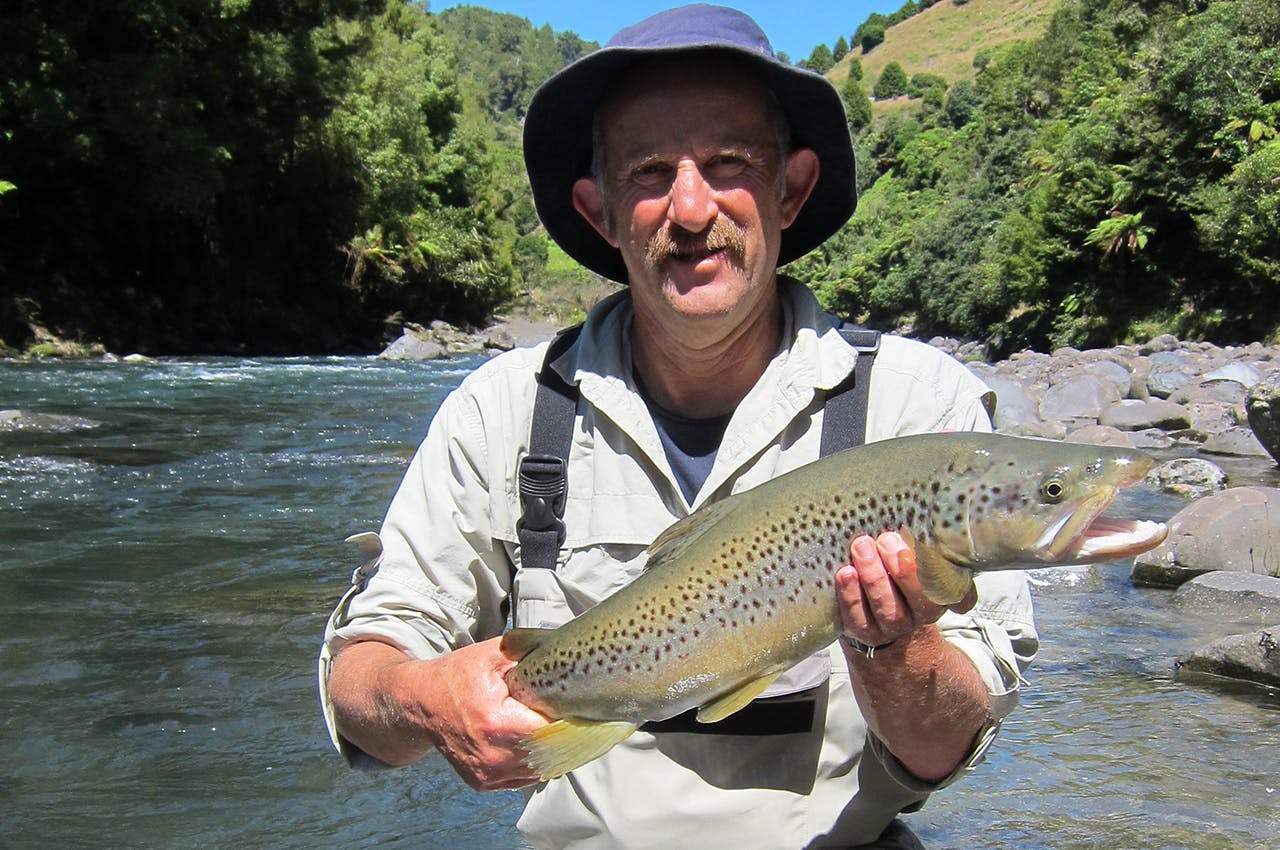
Gareth Morgan wants to make Stewart Island/Rakiura predator-free. Photo: Supplied
“Predator free New Zealand is a great aspiration,” he says. “It’s a big hoary target that makes people think you’re off the planet, but it’s that kind of thing that inspires people.
“Wouldn’t it be cool if we achieved that by the country’s bicentennial in 2040?
However, Morgan doesn’t see the goal as being an overriding master plan.
“I just see it as an umbrella communication tool, an inspirational vehicle, nothing more,” Morgan says. “The last thing I’d want to see is it (PFNZ) being looked at for all the advances in this area because people are doing this stuff anyway in their own communities and on their own properties.
“So I see Predator Free New Zealand being of service to all of those people, not the other way around.
“I’m keen on eradicating predators on Stewart Island and there’s no way I’m waiting for Predator Free New Zealand to make it happen because I’ll be dead and gone by then.”
In May, Morgan and DOC released a report on the possibility of making Stewart Island/Rakiura predator-free.
It would require an investment of between $40 to $50m which Morgan says won’t be a problem finding because of the global interest the project would get.
“Believe it or not,” he says in his usual wry manner, “New Zealand isn’t the only country in the world with a rat problem.”
Because the island is inhabited by humans and because of its size, it makes a perfect pilot experiment to develop the know-how to make the rest of the country predator free.
Not only that, but Morgan believes the island would get World Heritage Status and become a tourism hot spot, providing a much needed economic boost to Southland and New Zealand.
It also fits with Sir Paul Callaghan’s vision of starting in the south and working up.
The only problem, according to the report prepared by DOC, it’s not currently possible.
The report DOC released about the possibility of making the island predator-free concluded that ‘using our current suite of tools and best practice for island eradications, we do not consider that it is technically feasible to eradicate rats, cats, and possums from Stewart Island at this time’.
However, Morgan and the department are keen to commence with the first phase of the project which is to make a 5000ha predator-free area around Halfmoon Bay which would be protected by a 12km predator-proof fence.
Then, when the ability to eradicate predators advances, stage two of the project would concentrate on the rest of the 170,000ha island.
“The technology for the large scale eradication needs further development,” Morgan says. “The largest island eradication to date is Campbell Island at 11,000ha so Stewart Island/Rakiura is an altogether different order of magnitude and a quick one-off eradication isn’t deemed feasible.”
He says alternatives such as a zone-by-zone approach is being considered, but that the “technology for low maintenance trap-lines – defences to protect a zone from re-invasion – are yet to be developed.”
Obviously, if this is the case for Stewart Island/Rakiura, it’s hard to see how predators could be eradicated from our two largest islands.
It’s exactly these scientific challenges, however, that make large scale predator eradication such an intriguing field of research for the scientists around the country.
Landcare Research biologist Andrea Byrom and her colleagues are working hard to identify new technologies to help in the war against predators.
“This whole concept of a predator-free New Zealand piques the interest of everyone I work with,” she says. “Right from senior management down to all the technicians and everyone in between.
“The public is catching on and recognising that the kind of work we do is important. It is public-good science; it’s for the benefit of the country.”
When Byrom began her career researching the biology of ferrets 10 years ago, she says the people she worked with didn’t even discuss the possibility of New Zealand eliminating its unwanted mammalian predators.
“Now we’re changing a lot of our research to really scale up,” she says. “That’s where we’re really focusing our efforts. We’re starting to think at the size of Otago Peninsula, Banks Peninsula and the Hawke’s Bay.”
Further north, there’s talk about making Whangaparaoa Peninsula and Auckland’s eastern suburbs predator free.
Byrom, her colleagues in Landcare, and other scientists around the country are researching innovative ways to make it possible to eradicate predators from increasingly large areas.
And there are some good ideas: traps that can kill 100 stoats before needing to be replenished; super lures that either through sound or pheromones attract predators from far and wide like the Pied Piper; genome technology that can kill specific species only, while being completely harmless to others; plus, simple, but obvious innovations like cheap spring traps that can kill both rats and stoats.
All sorts of ideas are being researched, but the problem is funding.
Currently, Byrom has $2m each year to fund research on pests and weeds. To make the technological quantum leap needed to eradicate predators from large areas, she estimates she needs between $10 and $20m.
“I bought a lotto ticket the other day for the first time in probably 15 years and if I had won big I would have spent it on research because I actually think we can make huge headway in solving New Zealand’s big problems in this area.”
For now, however, Byrom believes while research continues Predator-Free New Zealand, as an advocacy body, can help overcome potentially the biggest challenges to mass pest eradication: a lack of public buy-in, without which nothing can happen.
“Advocacy has such a big role to play,” she says. “People are going to have to think differently about predator control, it needs to become part of our national psyche.
“It needs to become like getting up and brushing your teeth in the morning. It will be one of those things where you go out and check your predator traps every morning in your backyard.
“That’s the level at which it’s going to operate at.”





